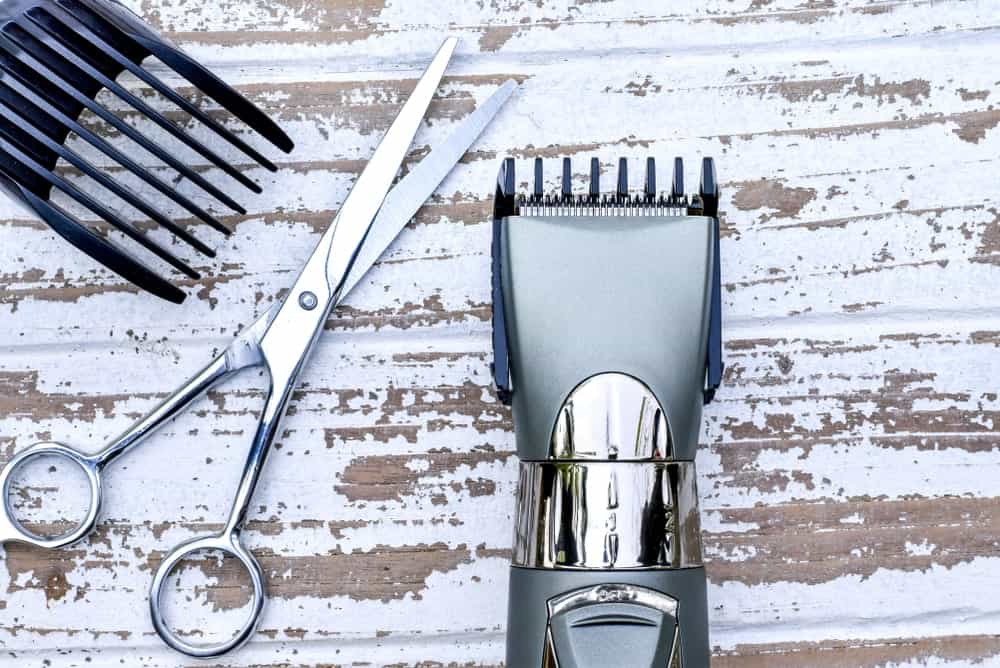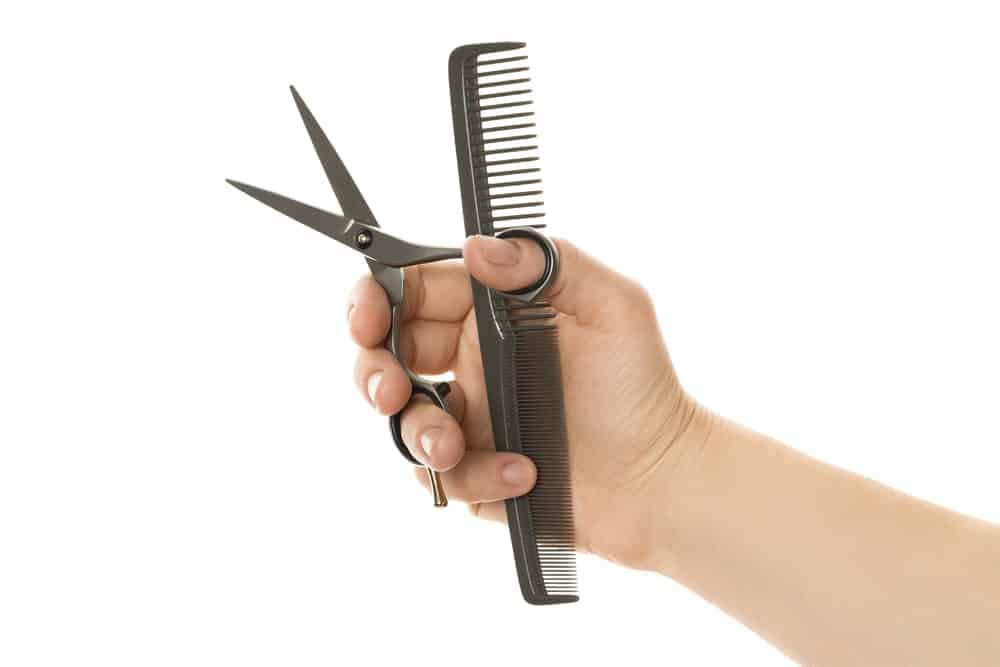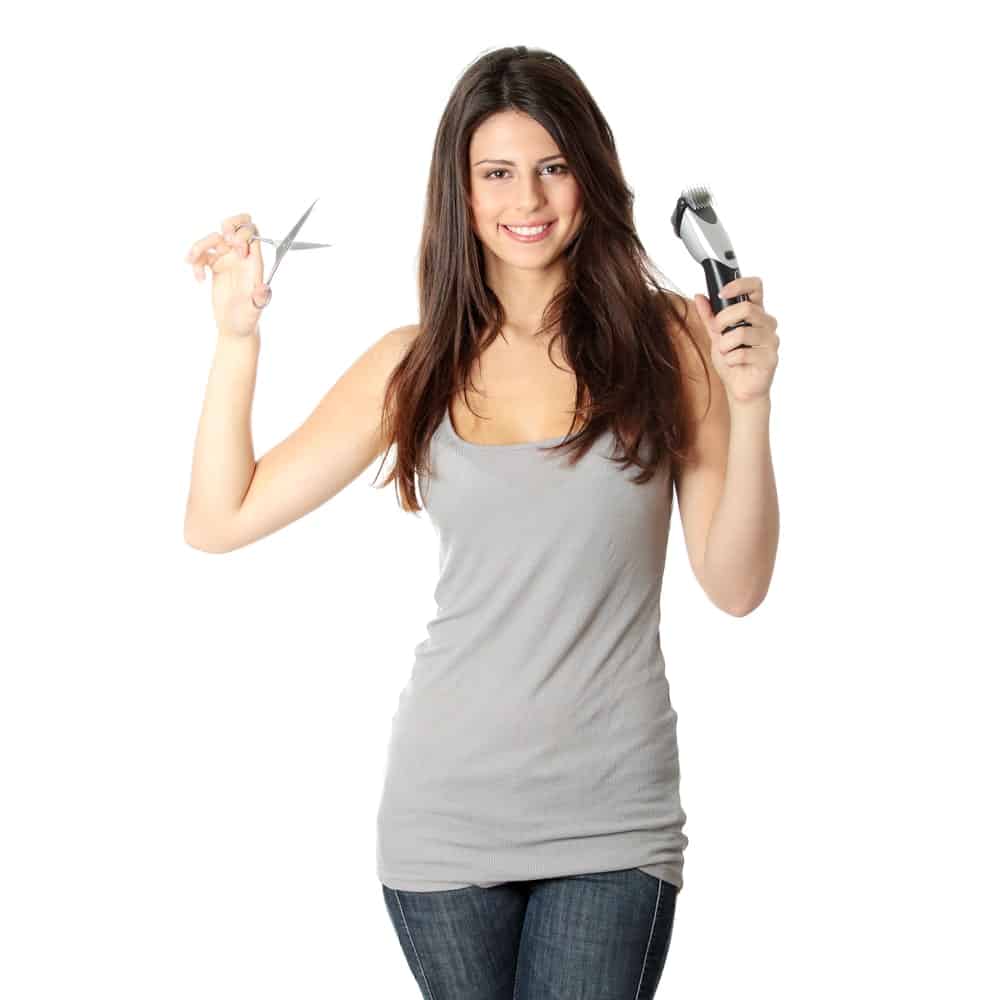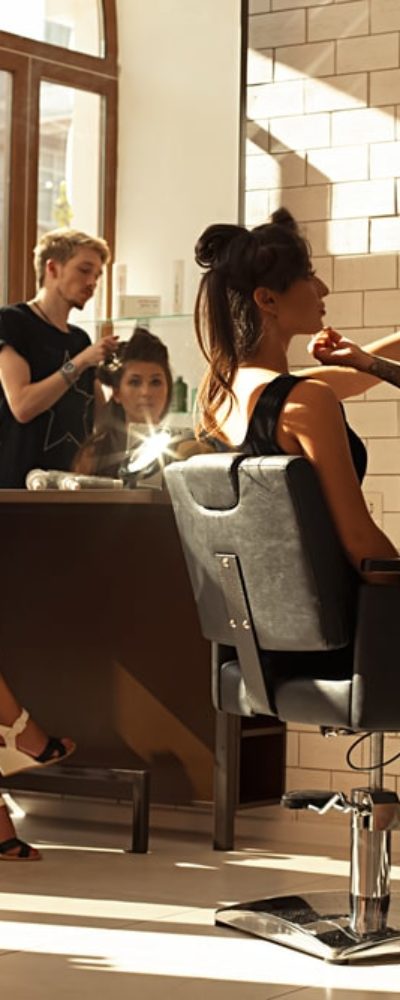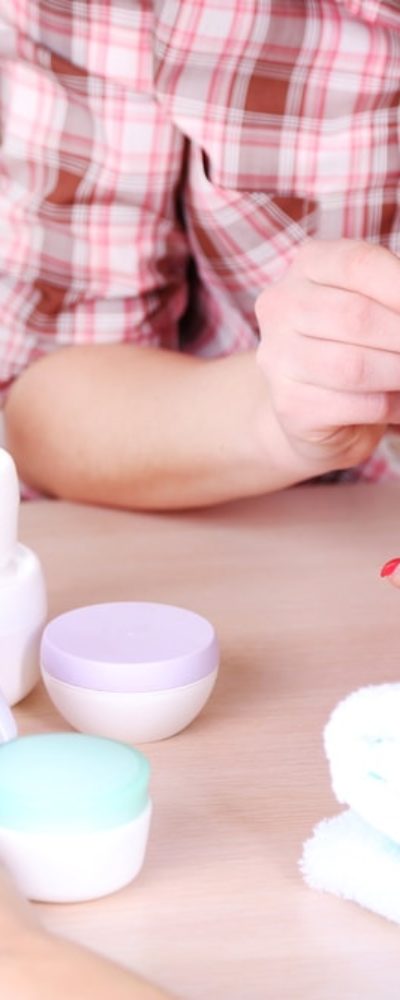Have you ever walked into a barbershop or hair salon with a simple cut in mind, but you walked out with something completely different? On the other hand, did you learn the truth of the old adage of ‘the only thing worse than not getting what you wanted, is getting exactly what you wanted?’
Hairstyles are highly individual, and these cuts can be tricky to pull off correctly. A stylist needs to balance what you want with your hair length, texture, and lifestyle. Even a basic ‘high and tight’ requires the right tools, a steady hand, and a touch of artistry.
Are you interested in getting into this field, or maybe you just want to keep the kids looking neat in between salon visits? Hair clippers and haircutting scissors are two of the main tools of the trade. Which of these options should you work with? Which is easier to learn how to use?
Clippers
Hair clippers are an electric razor specially designed to cut the hair on the head. These devices have a series of sharpened blades inside the housing. A motor moves them quickly from side to side, slicing through the hair. Hair clippers typically come with guards of different lengths. You simply choose a guard and snap it into place. This protects the scalp and determines how long the hair will be cut to.
Hair trivia: Manual hair clippers were invented by Nikola Bizumic, a Serbian barber, in around 1850. Serbian investors refused to financially back his new device, but he found a British investor. His manual hair clippers proved so popular that Queen Victoria awarded him with a title.
What Are Clippers Best For?
Technically you can cut the hair of any length with clippers. However, these are best used for short length haircuts. This includes styles like:
- buzz cuts
- standard cuts
- Caesar cuts
- shorter faux hawks and pompadours
- high and tights
Pros
Many clippered cuts are quick and straightforward, making them beginner-friendly.
These tools are easy to use. Just snap on a guard and turn it on.
Clippers follow the shape of the head. If you have a symmetrical skull, you’ll probably end up with a symmetrical cut.
Short cut strands tend to stand out from the head instead of lying down. This means that clippered cuts can make the hair look thicker.
Clippers are also good at giving consistent results, week after week, without a big-time commitment.
Cons
Not all clippered hairstyles are quick and simple, especially when you get into more advanced fades and other details.
Because the hair is trimmed short, mistakes are immediately obvious.
If you’re working on an uneven head, the skull shape will also be immediately obvious.
Your only way to hide haircut problems is to trim even shorter.
The cut will grow out quickly and may look radically different from one week to the next. Some of these growing states may be really awkward looking.
Can Clippers Damage Hair?
Clean, well maintained, sharp clippers will slice through your hair neatly without damaging the hair shafts. Dull and poorly maintained clippers can snag hair, yanking out strands. They may also crush the hair shaft instead of snipping it, leading to split ends.
Pressing too hard against the scalp (which can happen when you’re struggling with dull clippers) can lead to a nicked scalp, bacteria in the scrapes, and possibly ingrown hairs.
10 Steps To an Easy Clipper Cut
Possibly the simplest and most classic clipper hairstyle is the basic buzz cut. Here’s how to pull it off:
- Read the instructions on your clipper set.
- Select which blade guards to use. You can keep it simple and go with a classic #3, or plan for a gentle fade with a slightly longer top. In that case, lay out several clippers. Higher numbers on the guard mean longer hair.
- Wash the hair and towel dry.
- Lay a towel over the shoulders to keep itchy loose hairs from going down the collar.
- Snap on the longest guard you’ll be using and start cutting. You want to scoop the blade against the hair. Move against hair growth. Go from front to back in the top, and from the bottom up for the back and sides.
- If you’re using several guards, switch to the smaller one and go over the sections that should be shorter.
- Comb the hair and check the cut. Compare the hair from one side of the head to the other. Look at the transitions between lengths.
- Touch up where needed.
- Clean up the edges and around the ears with a shorter guard.
- Brush away the loose hair or use a lint roller and send your first haircut out into the world.
Scissors
Although you can technically use any pair of scissors to cut hair, it’s much better to go for the ones specifically designed for this job. They are also called barber or hairdressing shears.
Unlike that old pair of scissors you have lying around the house, proper hairdressing shears are made of quality metal. They sharpen easily and keep their edge. The scissors also tend to be lightweight, with a finger brace and thumb ring for stability. They have a sharp, not blunt, tip for detail work.
Hair Trivia: Scissors appear to have been invented about 3000 years ago in ancient Mesopotamia. However, they weren’t used for haircuts. Historians believed the Mesopotamians cut their hair with knives or swords. Let’s hope they had steady hands.
What Are Scissors Best For?
Yes, you can create a short style with fades and other details with just a pair of scissors. However, this takes time and practice. More beginner-friendly options are haircuts on medium to long hair with minimal layers. Think about:
- bowl cuts
- bobs
- long bobs (lobs)
- mod cuts
- blunt cuts
- subtle layers
You can also cut a fringe in to change up the look.
Pros
Simple trims can be very quick to pull off, sometimes in under 10 minutes.
Scissors give you the versatility to weave, point cut, slice, create layers, and do other precision techniques.
You get more individually tailored results that can play well with hair texture, skull shape, lifestyle, etc.
These haircuts tend to grow out better and more consistently. However, that’s more a feature of medium to long cuts than anything to do with the scissors.
You may be able to hide mistakes by parting the hair differently until it grows out.
Scissors are simpler to clean, sharpen, and maintain. There also aren’t any electronics that could break down mid-cut.
Cons
Scissors lack guards. You use your fingers (your soft, tender, fleshy fingers) as a guard to measure out the length and keep the scalp safe. Be careful as you work.
Clippers may be able to take out a long swath of hair at a stroke. With scissors, you need to work one small section at a time. This makes the haircuts take longer.
It can be maddening to try to fix slightly uneven hair. You may find yourself bouncing from one side to the other, snipping and snipping away.
Simple one-length trims are quick to learn. Other cuts get very complicated, very quickly.
Do Scissors Damage Hair?
Sharp scissors will snip hair off cleanly along the shaft with no damage. However, nicked blades snag hair and dull edges crush the hair shaft, encouraging split ends.
Finally, look at your fingers and the head you’re working on. Haircutting scissors are notoriously sharp. Snip with care when you’re working, especially around the ears.
15 Steps To an Easy Scissors Cut
A good first project for medium to long hair is a simple, one layer trim. This has more steps than the clipper cut above, but trim is still easy to pull off. Here’s what you need to do:
- Gather what you need: a comb, sharp haircutting scissors, a towel, and a willing head.
- Work on washed, combed, product-free hair. Straight and wavy hair is easier to work with when damp. You may get better results with curly or kinky hair if you cut it dry.
- Section the hair. For a basic trim like this, you can stick with a two-section parting. Simply use your comb to draw a line from the middle of the forehead to the top of the head and then straight back to the nape of the neck. Secure one section out of your way with a clip or hair elastic.
- Comb through the section you’re working with.
- Pinch a small amount of hair between the index and middle fingers of your non-dominant hand. Start near the scalp and glide your hand down until you’re gripping the hair within half to one inch of the scraggly tips.
- Hold the scissors in your dominant hand and snip a quarter-inch off the hair you pinched. This creates a guideline that you’ll use for the rest of the head, so make this cut as even as possible.
- Pinch more lengths of hair, including a bit of the guideline. Snip to make all the hairs the same length.
- Repeat the process, working around the hair. If the original haircut is shorter at the front sections, angle your scissors as you snip. This way, you’ll continue to take off a quarter-inch with each slice of the blades.
- Undo the other section and comb through it.
- Pinch a bit of the original guideline cut with the new hair and snip away.
- Proceed with trimming this side just like you did the other one.
- Pinch and trim the fringe, if there is one. Take off less hair than you think you need, as fringes and bangs tend to spring up and look shorter. You can always cut more, but you can’t add hair back.
- Check the cut. Take two segments of hair from the same position on each side of the head, such as just over the ears, and pull them together to a central point. They should meet there, not off to one side.
- If it’s uneven, trim the longer side. Take off just a little at a time, aiming for under an eighth of an inch. It’s easy to over-correct here.
- Comb through one final time and snip off any longer strands that are jutting out of the new haircut.
Clippers vs. Scissors: Which Wins the Showdown?
Clippers were designed for short haircuts, and they do that very well. With a few quick passes, even a haircutting amateur can create a respectable looking, consistent final result. Some effects, like fades, are much faster and easier to pull off with clippers than scissors. If you know you’re going to be doing only shorter styles, this is a good choice.
On the other hand, scissors are a better fit for medium to long styles. They give you more control and do better at trimming dry ends and touching up growing-out layers. Scissors also require less maintenance, don’t have a motor that wears out, and can be sharpened without wrestling with a casing. If you have a little more time and willingness to learn cutting techniques, haircutting shears are a great investment.
One final suggestion: why not both? Many modern haircuts use a combination of elements. If you want to make an undercut, it’s easier to do with two tools: clippers for the low fade, and scissors to create the right length at the top.

